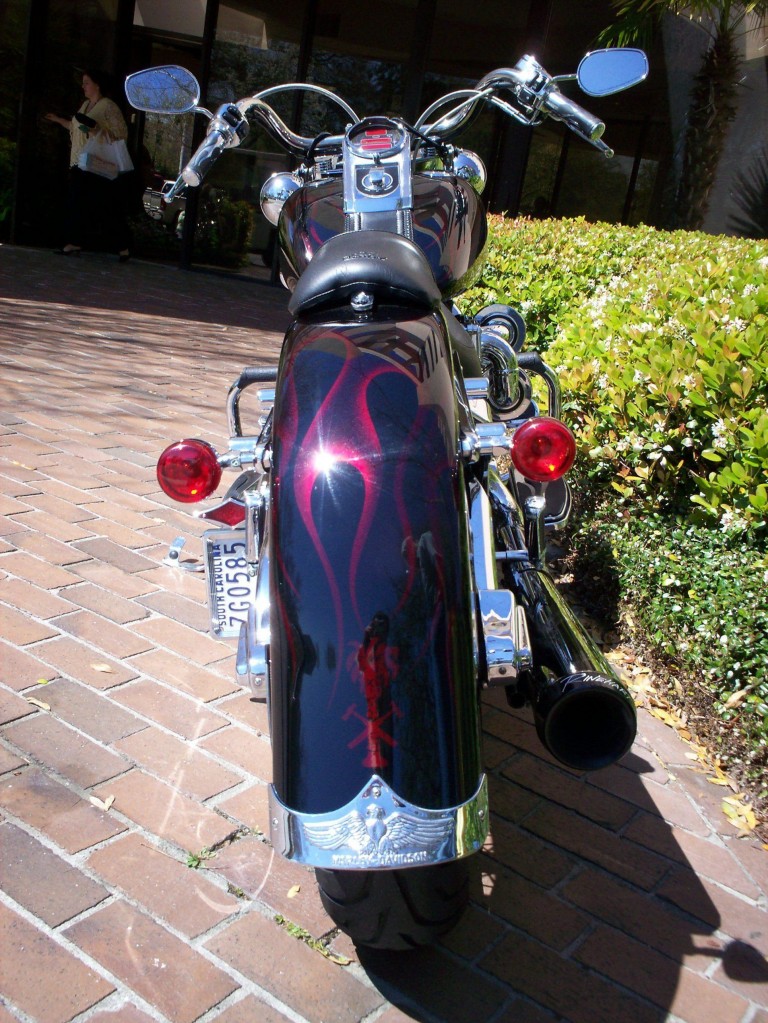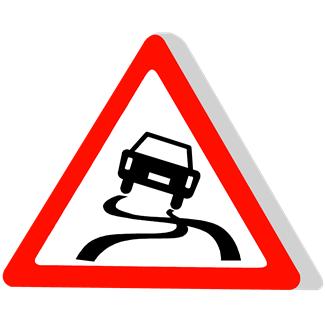If you love antique motorcycles like myself, then you’re going to love this video! Filmed in 1918, the video illustrates Harley motorcycle daredevils performing exciting and dangerous stunts. I hope you enjoy it as much as I do.
Did you enjoy this video? Share it on Facebook.
I love watching motorcycle stunts (note that I didn’t say I love doing motorcycle stunts). I leave that to the professionals who actually perform stunts for a living. Below is a great video of a motorbike stunt rider. To prevent personal injury and a motorcycle accident, do not attempt to perform any of the actions performed in this video.
 Enrolling in motorcycle school is one of the best ways to become a better and safer motorcycle rider. Not only does motorcycle school help you to become proficient in new-found skills, but it also helps you to feel more confident in any type of environment—whether you’re traveling through a big city or obstacle track.
Enrolling in motorcycle school is one of the best ways to become a better and safer motorcycle rider. Not only does motorcycle school help you to become proficient in new-found skills, but it also helps you to feel more confident in any type of environment—whether you’re traveling through a big city or obstacle track.
Many motorcycle schools offer a range of classes for different skill levels, helping riders get the most beneficial instruction for their money.
A great motorcycle school will teach beginners how to observe the road and surroundings around them, body positioning techniques, coordination strategies, traction skills, safety tips for various settings, and steering, handling, and shifting techniques.
What many beginner riders might not realize is that riding a motorcycle is a whole different game than operating a motor vehicle. You have to deal with drivers who may not always be courteous or aware of your presence and there are different laws and rights while operating a motorcycle. Not to mention, there are several safety factors riders must take into account while operating a motorcycle, including head and body protection, weather conditions, traction, and time of day.
Honing your motorcycle skills is one of the best ways to decrease your chances of being involved in a motorcycle accident and preventing personal injury.
Have you ever attended motorcycle school? If so, what did you think of it?
Lane splitting, which is depicted in the video below, is extremely dangerous and has led to thousands of motorcycle accidents. See the video below of a motorcyclist lane splitting:
As you might already be aware, there is no South Carolina law that requires motorcyclists to wear helmets. However, although you’re not required to wear helmets, it’s always a good idea to wear one for safety purposes. Motorcycle accidents are just that, accidents. You can’t prevent the way others drive on the road. Even if you’re a highly experience biker, there is always the chance of being involved in a motorcycle accident with a motor vehicle or other bike.
 Image above taken from Motorcycle-Superstore.com.
Image above taken from Motorcycle-Superstore.com.
When you wear a helmet, not only can you prevent severe brain damage, but you can also prevent death. If you’re ever in a motorcycle accident and your head smacks the ground, curb, or any other brain object, the brain rattles against the scull, which can cause internal bleeding or swelling—all of which can lead to death or lifetime brain injury. In order to prevent impact, a motorcycle helmet is required.
A helmet is comprised of an outer shell and an inner lining that works by absorbing energy. The inner lining is the most important component of a helmet, since it is the element that absorbs the impact. The lining controls the movement of your head and absorbs energy that would force your head from side to side.
And it’s always a good idea to get a full-coverage helmet to prevent facial abrasions in case of an accident.
Want to receive more motorcycle safety tips? Sign up for our blog RSS feed.
 **Image above taken from Fun-Christmas-Ornaments.com
**Image above taken from Fun-Christmas-Ornaments.com
Uricchio Law Firm would like to wish all of our loyal blog readers safe and happy holidays! We’d also like to share with you some tips on how to stay safe and avoid personal injury this holiday season:
1. Travel Safely: Whether you’re traveling by motorcycle or motor vehicle, be extra alert and focused. With more volume on the roads and in shopping centers, it can be quite overwhelming.
2. Don’t Leave the Tree Lights On: If you’re not home, your tree lights should not be on. For years, tree lights have been the culprit of many house fires during this time of year.
3. Take Proper Precautions During Icy Winter Storms: No car, not even a four-wheel-drive car, can stabilize on ice. Be sure to practice caution while driving or walking, and be on the lookout for black ice (which looks like a dark patch of pavement).
We hope you enjoyed our safety tips for this holiday season and we wish you a very merry Christmas and happy holidays!
If you missed part I of this post, feel free to check it out here.
Only Smooth Moves:
Turning a motorcycle on such a slick surface demands an ultra-smooth approach. Getting on the brakes abruptly or making a sudden steering input could put you in the guardrail. So you want to be slowed down before you go in there and keep the throttle neutral all the way through –and be ready for cars that might get unstuck and block the whole mess.
That smooth approach to speed and direction changes will serve you well on all wet roads. Initiate your turns a bit more gradually. Downshift smoothly, engaging the clutch a bit slower than usual, and avoid abrupt throttle changes. Get on the throttle progressively. Use a taller gear to reduce the forces reaching the rear tire. Apply the brakes in such a way that the tires are not loaded abruptly. Allow more space to stop or slow down so that you need less. And also make sure that drivers around you have time to react to your moves.
The Eyes Need It: Though it might look better at the end of a long ride in the wet, a black rainsuit is going to be very hard to see in heavy rain.
**Image to the left taken from Motorcycle Superstore website.
That brings us back to vision. The ability of other drivers to see us could be the single biggest issue a motorcyclist must confront in the rain. With low light, windows obscured, and a streaked and possibly fogged windshield, the driver of a car may have a very difficult time seeing the world ahead. If you are wearing black, or even worse, a neutral color like gray or olive drab, you blend into that gray world. A bright yellow rainsuit is probably the best choice and the single simplest way to make your wet-weather rides safer, though white is also an excellent choice and even better than yellow at night. Fluorescent colors also help during the day and retro-reflective striping or panels on your rainsuit, helmet or a pack also help at night. A visible helmet color also makes a difference at night.
How about your own ability to see? Even with a faceshield that’s wet on both sides, you probably have a better view of the situation around you than the average car operator does in the rain. The drops on a faceshield (or goggles) are inside your focal point and are just vague blurs when you focus on the road ahead. However, your view can be impaired by faceshield fogging or a windshield that rises into your line of sight. Unlike a faceshield, a windshield is well out in your focal range, and the water on both sides makes it hard to see through. Rain-X does help disperse water on both face- and, more importantly, windshields.
Anti-fogging solutions and the Fog City Fog Shield effectively stop fogging, although the Fog Shield is not recommended for use at night because it creates some ghost images. Even if you don’t have a commercial anti-fog solution, a thin layer of hand or dish soap will stop fog. You can wipe it on wet or dry, than polish it off.
A Rainy Night:
For many motorcyclists, the demons come out on a rainy night. Each of those raindrops on your faceshield or goggles picks up a pinpoint of light from every light around you. Riding behind a windshield that is too tall to see over is extremely difficult, which is why we caution against that configuration. Oncoming cars can completely obscure your vision. A timely wipe of your faceshield can help, but you may be unable to see the road at all for a moment. Puddles may be completely undetectable.
On the other hand, lights that aren’t so bright — such as taillights — reflected in the road surface ahead can show you features of the road surface that you headlight doesn’t illuminate. My preferred strategy is to follow (at a distance that keeps me out of its spray) a vehicle with lots of taillights, watching the point where they are reflected to pick out potholes, seams, or objects lying in the road. Watching the vehicle will also warn you of large puddles, which could cause hydroplaning if you hit them fast enough.
Even at night a motorcyclist has a few aces to play. One advantage of a motorcycle is your high view point compared a person in a car. At night, this allows you a better view of the road surface because you have a steeper angle of view. As a result, it’s easier to see striping, and other shallow features. You can also use the reflective qualities of wet surfaces to your advantage. Wet utility wires or tree branches can warn you of a car approaching over a hill or around a corner. Brake lights reflected under a truck can alert you of an impending stop.
Did you find these bad weather motorcycle safety tips helpful? We’d love to hear from you in our comments section.
I found this poem on the Internet last week and thought I would post it on my blog. You can find additional biker poetry on this website.
My Harley to the End
“You wont ask me for much
Just a little of my time
To fix your aching joints
And fill your tanks with wine
To polish those rough edges
Keeping them looking new
Tighten up your spokes
Maybe a new paint job too.
Replace all your plugs,
Wire all your circuits
Bring out those fantastic colors
Painted without smudges
Take off those old rusty nuts
Shine up all those screws and such.
Replace your worn down tires
Works out to be quite a few hours
Of mental meditation
Decisions, contemplations
And some aggravations.
But all in all, I love you so
You take me places people don’t go.
You spend your time just hanging out
Waiting to take me all about
I could not ask for a better friend,
Me and my Harley to the end.”
-Kimberley A. Manning
And below is my motorcycle until the end!
What to do in Case of an Automobile Accident…
These tips can also apply to motorcycle accidents, with the obvious exceptions.
At the Scene:
1- Compose Yourself - Accidents are never planned in advance. They are always unexpected. Your initial reaction may be confusion and/or anger. Before doing anything you must gain control of your emotions and assess the situation.
2- Help Those Who are Injured – Call an ambulance if necessary. Do not try to move an injured person unless you are properly trained.
3- Take Precautions to Prevent Further Accidents – Do not move the vehicles unless it is unsafe to leave the vehicles where they are. To warn approaching vehicles use flares, flashlights or raise your hood. Above all, do not do anything to incur any further injury to yourself or others!
4- Don’t be Mr. Nice Guy… Call the Police - Their report will serve as a valuable tool in determining liability. Answer their questions but remember what you say may be used against you. Make no admissions to fault even if you think you caused the accident. South Carolina is a comparative fault state. Find out where and when you can pick up a copy of the accident report.
5- If possible, Take some pictures of the Scene – Use a digital camera or cell phone to take some photographs, including the intersection, the damage to your vehicle and damage to the other vehicles.
Record Details:
Click here to access an accident form our firm created to assist you in recording details in the event of an accident. This form provides space to record names, addresses and information regarding the parties involved in the accident as well as witnesses. It also provides space to diagram the event.
The Next 24 Hours:
Notify Your Insurance Company – Notify your insurance carrier and make a report or have your lawyer make the report for you. You must cooperate with your insurance company, however, you are under no obligation to give statements to the other insurance company. Remember, their primary concern is not your welfare. It is to make money and pay as little as possible.
Seek Legal Advise - Most personal injury attorneys operate on a “no charge unless you recover” basis. They do not charge for initial consultations. A call to your attorney may prevent you from receiving an in adequate settlement or no settlement at all.
Should You Seek Medical Help?
If you have not received obvious injuries such as broken bones, cuts, etc., you may not feel the need to see a doctor. However, it is important to remember that serious and expensive injuries do not always result in immediate pain. Your personal injury attorney, in many cases, can refer you to medical professionals who will treat you and may defer payment until the time you receive your insurance settlement.
Following a motorcycle accident, choosing the right lawyer is one of the most important things you can do to ensure you are justly compensated for your injuries. Before going to your initial meeting with the lawyer, have a list of questions prepared. Below are some basic questions to get you started. In order to be happy with the final outcome of your case, you must first feel comfortable with the person hired to represent you and protect your rights.
1. How long has the lawyer and the firm been practicing law?
2. Does the lawyer have professional liability insurance?
(Professional liability insurance also protects you in case an error is made that damages your case.)
3. What rights do I have that need protection and what do I need to do to protect them?
- What forms and papers do I need to get?
- What claim letters need to be sent; what forms need to be filled out; how many insurance companies must be notified?
- Can you do this for me?
4. Do you charge a contingency fee?
(A contingency fee is one that is charged at the end of the case and only if you are successful. This allows anyone who has been hurt in an accident to have easy access to a lawyer.)
5. What percentage will you charge me if my case is settled prior to a lawsuit?
6. What percentage will you charge me if my case is settled after a lawsuit is started?
7. Will I be required to pay for any case expenses prior to settlement or will you advance expenses for me?
8. Will I be charged an additional fee for filling out medical insurance forms or processing my medical insurance claims?
9. Will I be charged an additional fee for helping me to collect reimbursement for my property damage?
10. If I have PIP or Med-Pay coverage, will I be charged an additional fee for helping me to recover these?
11. Will I be charged an additional fee for helping me to collect my lost wages for lost income?
12. Who will pay my medical bills; physical therapy bills; drug bills; transportation expenses; temporary or permanent household help; lost income; property damage; and pain and suffering?
Did you find this post helpful? If so, feel free to share it with your friends on Facebook.





